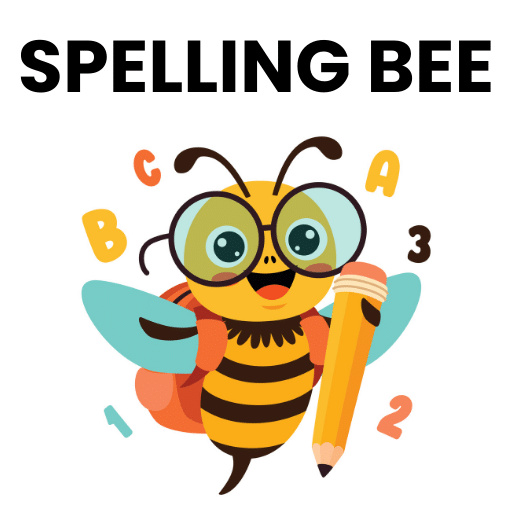Cranial Nerves | Animal Husbandry & Veterinary Science Optional for UPSC PDF Download
| Table of contents |

|
| Overview |

|
| Function |

|
| Anatomy |

|
| Conditions and Disorders |

|
| Care |

|
Overview
What are the cranial nerves? A number of cranial nerves send electrical signals between your brain and different parts of your neck, head and torso. These signals help you smell, taste, hear and move your facial muscles. The cranial nerves begin toward the back of your brain. They are a key part of your nervous system.
How many cranial nerves are there?
You have 12 cranial nerve pairs. Each nerve pair splits to serve the two sides of your brain and body. For example, you have one pair of olfactory nerves. One olfactory nerve is on the left side of your brain and one is on the right side of your brain.
What are the types of cranial nerves?
Your 12 cranial nerves each have a specific function. Experts categorize the cranial nerves based on number and function:
- Olfactory nerve: Sense of smell.
- Optic nerve: Ability to see.
- Oculomotor nerve: Ability to move and blink your eyes.
- Trochlear nerve: Ability to move your eyes up and down or back and forth.
- Trigeminal nerve: Sensations in your face and cheeks, taste and jaw movements.
- Abducens nerve: Ability to move your eyes.
- Facial nerve: Facial expressions and sense of taste.
- Auditory/vestibular nerve: Sense of hearing and balance.
- Glossopharyngeal nerve: Ability to taste and swallow.
- Vagus nerve: Digestion and heart rate.
- Accessory nerve (or spinal accessory nerve): Shoulder and neck muscle movement.
- Hypoglossal nerve: Ability to move your tongue.
Function
| 1 Crore+ students have signed up on EduRev. Have you? Download the App |
What is the purpose of the cranial nerves?
Your cranial nerves play a role in controlling your sensations and motor skills.
- Feel touch.
- Hear.
- See.
- Smell.
- Taste.
Motor nerves play a role in controlling your facial muscles or glands. Some cranial nerves have both sensory and motor functions.
Anatomy
Where is the location (origin) of the cranial nerves?
Two of your cranial nerve pairs originate in your cerebrum. The cerebrum is the largest portion of your brain that sits above your brainstem. These two pairs of cranial nerves include:
- Olfactory nerves that affect your sense of smell.
- Optic nerves that affect your ability to see.
The other 10 pairs of cranial nerves start in your brainstem. Your brainstem connects your brain and spinal cord.
What is the longest cranial nerve?
The longest cranial nerve is the vagus nerve. Your vagus nerve has both sensory and motor functions. It runs through many parts of your body, including your tongue, throat, heart and digestive system.
Is there an easy way to remember the cranial nerves with a mnemonic?
Cranial nerve mnemonics are memory devices to help you remember the names of the nerves in order of one through 12. Or they can help you remember whether nerves are sensory, motor or both.
Cranial nerve mnemonics to remember the names of the nerves in order include:
- On old Olympus’s towering top, a Finn and German viewed some hops.
- Ooh, ooh, ooh to touch and feel very good velvet. Such heaven!
To remember cranial nerve functions, the words in the mnemonic start with:
- S for sensory.
- M for motor.
- B for both.
The word order mirrors the numerical order of nerves one through 12:
- Some say marry money, but my brother says big brains matter more.
- Some say my mother bought my brother some bad beer, my, my.
Conditions and Disorders
What conditions and disorders affect your cranial nerves?
Some conditions or injuries can damage parts of the brain where cranial nerves are located. In some cases, a condition may damage only one cranial nerve. Trauma or surgery could injure or sever a nerve.
Disorders that affect the cranial nerves include:
- Amyotrophic lateral sclerosis (ALS): A progressive disorder where nerve cells break down and muscles weaken.
- Bell’s palsy: Sudden muscle weakness and drooping in one half of your face.
- Hemifacial spasm: Involuntary contractions (twitches) on one side of your face.
- Internuclear ophthalmoplegia: Loss of ability to move your eyes in sync when you look to the side.
- Oculomotor palsy: Damage to your third cranial nerve that causes one of your eyes to stay positioned as though you are looking down and out to the side.
- Stroke: Interruption to blood supply in your brain because of a blood clot or ruptured (burst) blood vessel.
- Traumatic brain injury: Disruption or damage to brain function, often because of a sudden and violent blow to the head.
- Trigeminal neuralgia: Chronic pain in your fifth cranial nerve, which runs through your cheek.
 |
Download the notes
Cranial Nerves
|
Download as PDF |
What are the common signs or symptoms of cranial nerve disorders?
Your cranial nerves affect many functions and sensations. As a result, different cranial nerve disorders have different symptoms. A cranial nerve disorder might affect your:
- Balance.
- Facial expressions.
- Hearing.
- Sense of smell.
- Swallowing.
- Taste.
- Vision.
Care
How can I keep my cranial nerves healthy?
You can keep your brain, cranial nerves and entire nervous system healthier with a few lifestyle changes.
- Achieve and maintain a healthy weight for your body type, sex and age.
- Drink alcohol only in moderation.
- Eat a diet full of nutrient-dense foods like fruits, vegetables and whole grains.
- Exercise regularly.
- Keep your blood pressure within a healthy range.
- Manage any conditions that increase the risk of nerve damage, such as diabetes.
- Quit smoking.
What is the outlook for people with cranial nerve damage?
An injured nerve may recover with time. In some cases, rehabilitation can be helpful to restore your nerve function. You may receive rehabilitation from professionals including:
- Audiologist for auditory nerves.
- Physical or occupational therapist for nerves that control motor function or balance (such as with vestibular rehabilitation).
- Speech and language pathologist for face and mouth nerves.
- Vision therapist for ocular nerves.
When should I call my doctor?
The symptoms of cranial nerve injuries or conditions vary depending on which nerve is affected. Contact your healthcare provider if you experience:
- Drooling with no known cause.
- Drooping in one side of your face.
- Facial pain or numbness.
- Muscle weakness or paralysis.
- Slurred speech.
- Tingling anywhere in your body.
- Vision loss.
A note from Cleveland Clinic
Your cranial nerves are nerve pairs in your brain. They connect your brain to other parts of your face, neck and torso. Cranial nerves can play a role in sensation, movement or both. If a condition or injury affects your cranial nerves, you may have problems with your sense of taste, smell or vision. A cranial nerve disorder may also affect your ability to make facial expressions. You can keep your entire nervous system healthier by eating nutritious foods, exercising and managing any health conditions.
FAQs on Cranial Nerves - Animal Husbandry & Veterinary Science Optional for UPSC
| 1. What are cranial nerves and why are they important? |  |
| 2. How many cranial nerves are there in total? |  |
| 3. What happens when there is damage or dysfunction in a cranial nerve? |  |
| 4. How is the function of cranial nerves assessed by medical professionals? |  |
| 5. What are some common disorders or conditions associated with cranial nerves? |  |
|
289 docs
|

|
Explore Courses for UPSC exam
|

|

















